Throughout ancient history, the reigns of kingdoms and countries have predominantly been held by men. However, within this male-dominated landscape, there have been numerous women who rose to power. This article explores the lives and legacies of seven extraordinary women from the ancient world.
These female rulers were selected based on their political influence, cultural impact, and documented achievements.
From the iconic Cleopatra of Egypt, who navigated her kingdom through the choppy waters of Roman political intrigue, to the valorous Boudica, who led a fierce rebellion against Roman occupation in Britannia, these women exhibited leadership qualities that were rare for their time and continue to be celebrated in their homelands as symbols of strength and resistance.
Cleopatra VII (Egypt)
Born in 69 BC, Cleopatra ascended to the throne at the tender age of 18 and quickly demonstrated her political acumen by navigating the turbulent waters of Roman and Egyptian politics. Her reign was marked by a series of alliances and romances with Rome’s most powerful leaders, which she used to fortify her position and safeguard Egypt’s interests.
Cleopatra did much more than forge political and personal relationships with Julius Caesar and Mark Antony. She initiated significant building projects and cultural initiatives that celebrated and revitalized traditional Egyptian culture amidst the Roman occupation.
Her strategic political alliances were pivotal, particularly her relationship with Julius Caesar, which helped her reclaim the throne from her brother, and later, her alliance with Mark Antony, which aimed to create an Eastern empire to rival Rome.
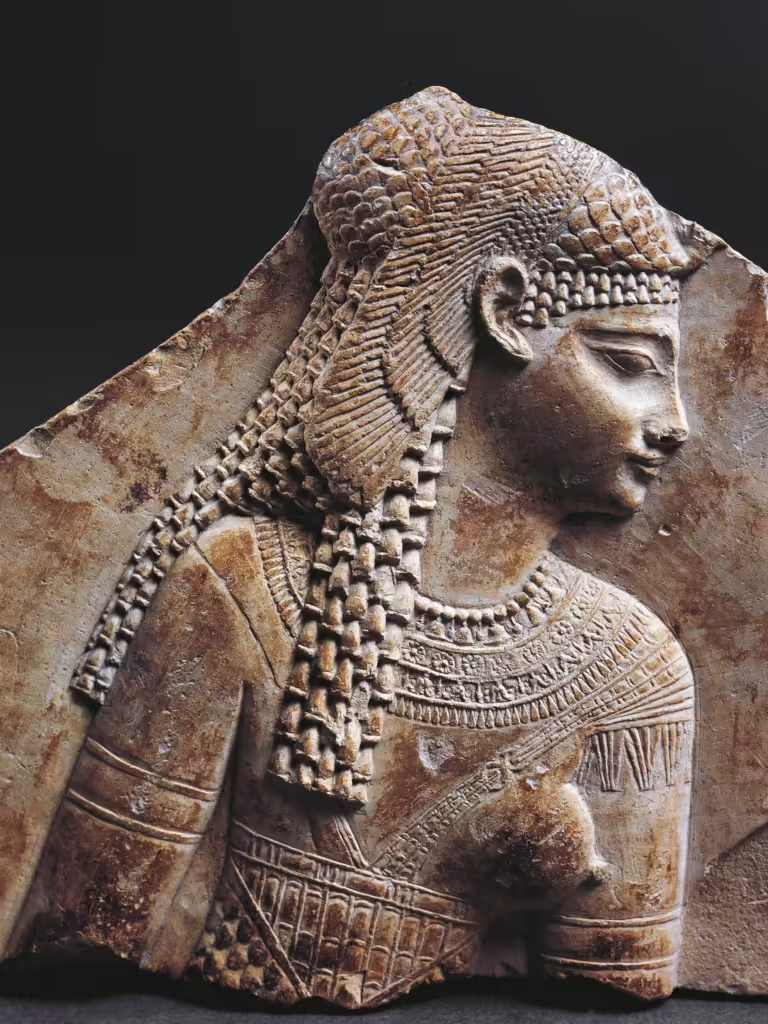
Despite her efforts, Cleopatra’s reign ended tragically with her suicide in 30 BC, following the defeat of her forces against Octavian, the future Emperor Augustus.
This marked the beginning of Roman domination in Egypt. Cleopatra’s life and death have inspired countless works of art, literature, and film.
Through her leadership, Cleopatra not only managed to hold onto power in a predominantly male-dominated world but also left a legacy that continues to captivate the imagination of the world.
Boudica (Britannia)
Boudica was a queen of the Iceni, a Celtic tribe in eastern England, known for leading a major revolt against the Roman Empire around AD 60 or 61. Married to King Prasutagus, Boudica was thrust into the spotlight after her husband’s death.
Prasutagus had intended to divide his kingdom between his daughters and the Roman Emperor, however, the Romans ignored his will, annexed the territory, and raped Boudica’s daughters. This propelled Boudica to seek vengeance against the Roman colonizers.
The rebellion started with the sacking of Camulodunum (modern Colchester), a major Roman outpost, followed by the destruction of Londinium (London) and Verulamium (St. Albans).
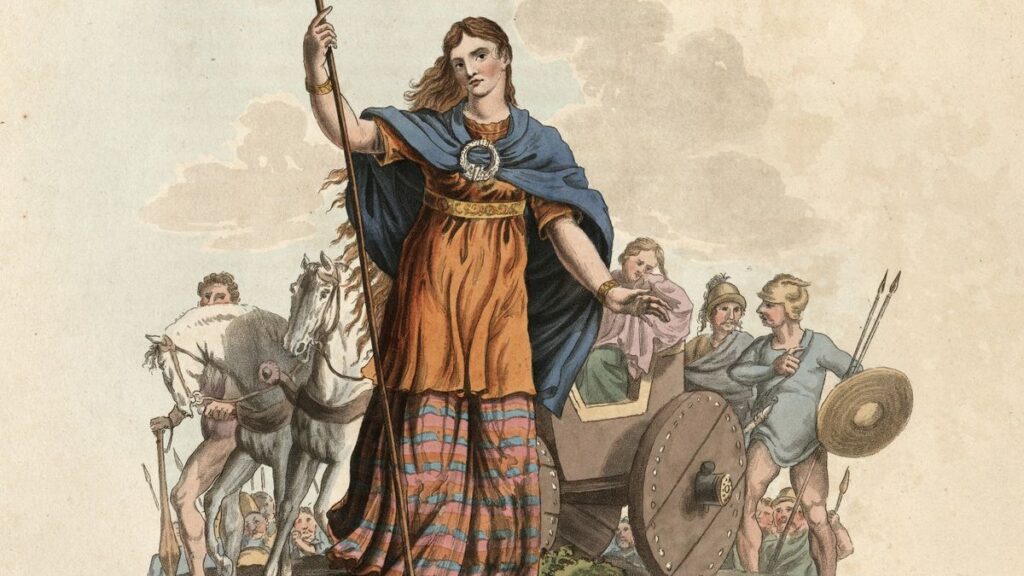
Boudica’s forces inflicted heavy casualties, reportedly killing up to 70,000 Romans and pro-Roman Britons. Despite their success, the rebels were ultimately defeated by a Roman army under Governor Suetonius Paulinus, culminating in a decisive battle believed to have been fought along Watling Street.
Boudica’s death is shrouded in mystery, with some sources claiming she took her own life with poison to avoid capture. Today, Boudica is celebrated as a national heroine and an emblem of resistance and national pride.
Hatshepsut (Egypt)
Hatshepsut was a pharaoh of Ancient Egypt during the 18th Dynasty. She first ascended to the throne around 1478 BC, while serving as regent for her stepson, Thutmose III, who was too young to rule at the time.
She soon assumed the full powers of a pharaoh, adopting the full regalia and titles typically reserved for male rulers. Her reign lasted for about 22 years, during which she was often depicted in traditional male pharaoh’s attire, complete with the false beard signifying kingship.
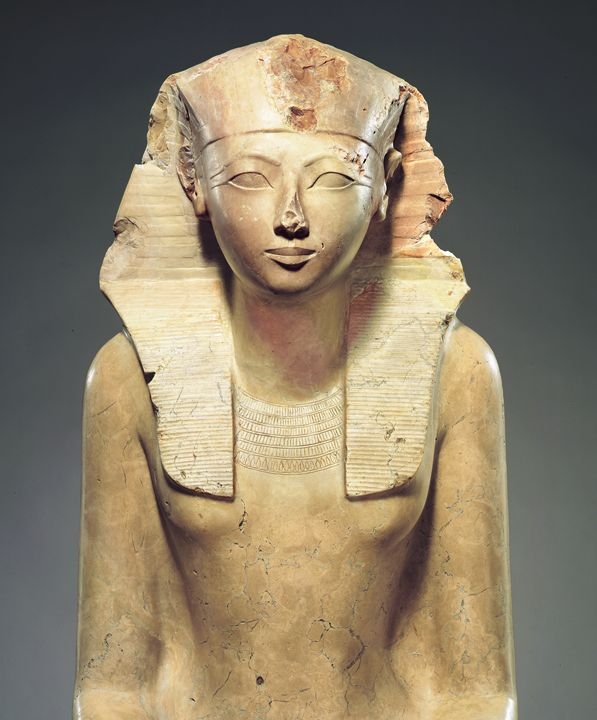
Under Hatshepsut’s rule, Egypt enjoyed a period of stability and prosperity. She expanded Egypt’s trade networks, most notably the expedition to the Land of Punt (modern-day Eritrea or Somalia), which brought back vast riches, including ivory, gold, and myrrh. This not only boosted the Egyptian economy but also demonstrated her prowess in international diplomacy and trade.
Hatshepsut was also a great patron of the arts and architecture. Her most famous architectural achievement is her mortuary temple at Deir el-Bahri, near Luxor, considered one of the architectural wonders of ancient Egypt.
After her death, Thutmose III regained full control of the throne and attempted to erase his step-mother from history, which included defacing her monuments and removing her name from official records. However, modern archaeological discoveries have since restored Hatshepsut to her rightful place as one of Egypt’s most effective and influential pharaohs.
Zenobia (Palmyra)
Zenobia was the queen of Palmyra, an ancient city that was located in modern-day Syria. She rose to prominence in the mid-3rd century AD as the wife of King Odaenathus.
After her husband’s assassination in 267 AD, Zenobia became the regent for her young son, Wahballat. However, she quickly established herself as Queen ruler and embarked on an ambitious path that challenged Rome’s authority.
Under Zenobia’s rule, Palmyra experienced a golden age. Not only was she educated, a rare feat for women in those days, she could also speak multiple languages including Aramaic, Greek, and Egyptian. Zenobia invested heavily in the cultural and economic development of her city, but it was her military ambitions that marked her reign.
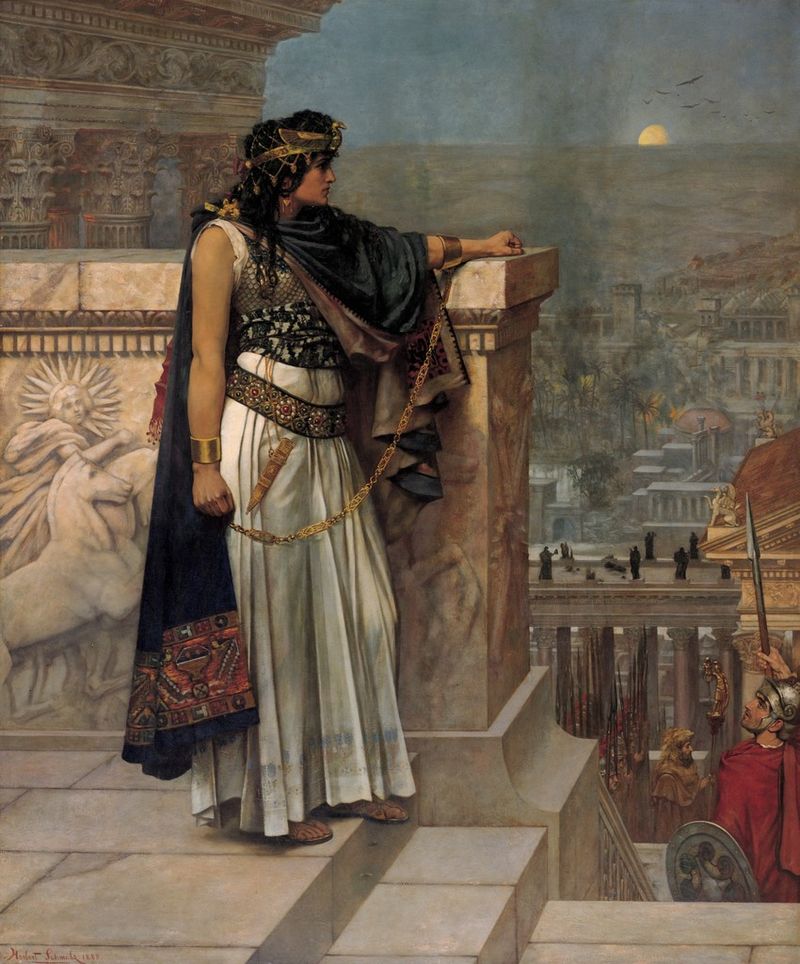
By 270 AD, Zenobia had annexed much of the eastern Roman territories, including Egypt and parts of Asia Minor. Her armies conquered Egypt by defeating the Roman prefect and claimed most of the Levant, pushing the boundaries of her empire and threatening Roman dominance in the east.
Her expansion angered the Roman Emperor Aurelian, who In 272 AD, launched a counter-offensive, eventually capturing Zenobia and taking her as a prisoner. According to some accounts, she was paraded in Aurelian’s triumph in Rome, adorned with golden chains.
The circumstances of her later life are somewhat unclear, with varying reports of her either marrying a Roman senator and living out her days in comfort in Rome or dying shortly after her capture.
Artemisia I of Caria (Halicarnassus)
Artemisia I of Caria, the queen of Halicarnassus, assumed the throne after the death of her husband and ruled during a tumultuous period of Persian attempts to conquer the Greek city-states.
Artemisia is best known for her role as an ally of King Xerxes of Persia during his invasion of Greece in 480 BC. Unlike other vassal states under Persian control, Artemisia was not compelled to provide ships for the Persian fleet but chose to participate anyway. She personally commanded her own fleet of five ships at the Battle of Salamis.

According to the historian Herodotus, although a woman, Artemisia was among Xerxes’ most trusted advisors. During the council before the Battle of Salamis, she was the only commander to advise against naval engagement, foreseeing the larger and less maneuverable Persian ships would be at a disadvantage in the cramped waters—a prediction that proved accurate.
Despite her counsel, Xerxes proceeded with the naval assault, leading to a decisive Greek victory. During the battle, Artemisia distinguished herself by her cunning; in one instance, pursued by an Athenian ship, she allegedly rammed a friendly Persian ship, which led her pursuers to assume she was a Greek ally and thus diverted their attack.
This maneuver allowed her to escape and impressed Xerxes so much that he reportedly declared, “My men have become women, and my women, men.”
Tomyris (Massagetae)
Our next female ruler is Tomyris, queen of the Massagetae, a confederation of nomadic tribes that inhabited the steppes of Central Asia in the 6th century BC. Renowned for her leadership and military prowess, Tomyris is perhaps most famous for her conflict with Cyrus the Great of Persia, one of the most formidable conquerors of the ancient world.
Cyrus was trying to extend his empire into the lands of the Massagetae and initially proposed peace through marriage to Tomyris. However, she saw through his strategies and rejected the offer, leading to a war. According to Herodotus, the Persian forces first tricked the Massagetae into a retreat by leaving a camp filled with wine, which the Massagetae drank, becoming incapacitated. The Persians then attacked, capturing Tomyris’s son, who later took his own life in captivity.
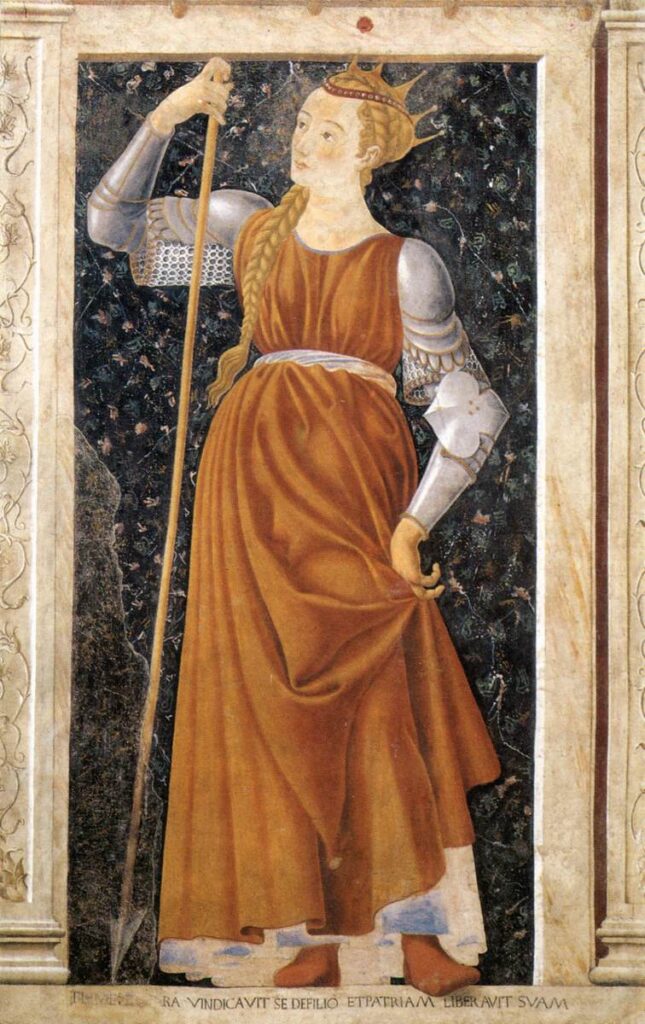
Enraged by the loss of her son, Tomyris rallied her forces for a counterattack, eventually defeating the Persians and killing Cyrus in the process.
According to legend, after the battle, she found Cyrus’s body and fulfilled her vow of vengeance by placing his head in a skin filled with human blood, proclaiming, “I warned you that I would quench your thirst for blood, and so I shall.”
Tomyris’s victory over Cyrus symbolized the fierce resistance of the steppe tribes against one of the greatest empires of the time. Her legacy as a warrior queen who successfully defended her land and people against a vastly more powerful enemy has made her a symbol of national pride in many Central Asian cultures.
The Trung Sisters (Vietnam)
During the 1st century AD, Vietnam was under the control of the Han dynasty, one of China’s most powerful and expansive imperial dynasties. The region known historically as Nam Viet, which includes parts of modern northern Vietnam and southern China, had been a contested area and was eventually absorbed into the Han Empire following the collapse of the Nanyue Kingdom in 111 BC.
The Chinese rulers levied heavy taxes on the local population, which further strained their relationship with the Vietnamese. They also sought to assimilate the Vietnamese into Han culture, mandating a Han dress code, language, and political practices.
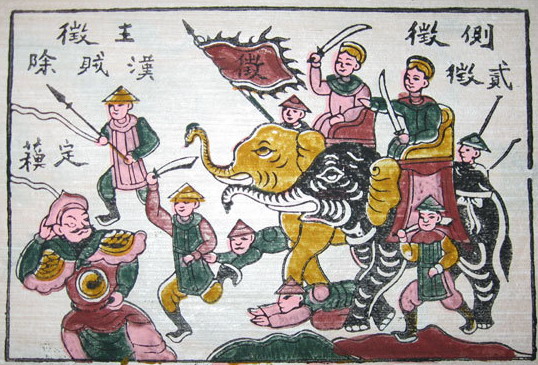
Fed up with the harsh policies, the Trung Sisters led a revolt against their Chinese occupiers in AD 40. Within just a few months the sisters had successfully repelled the Chinese governor from their homeland and liberated sixty-five fortresses. Trung Trac was proclaimed queen,
However, her reign was short-lived. In AD 43, the Chinese Emperor dispatched a large force to quell the rebellion. The sisters’ forces were eventually overwhelmed due to the superior military technology and tactics of the Chinese army. Facing defeat, the Trung Sisters chose to commit suicide by drowning themselves in a river, rather than surrender.
Their legacy endures today as powerful symbols of resistance and national pride in Vietnam. Annually, the Trung Sisters are commemorated during the Hai Ba Trung Festival, celebrating their bravery and the spirit of Vietnamese independence.

